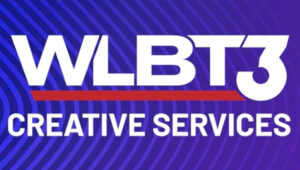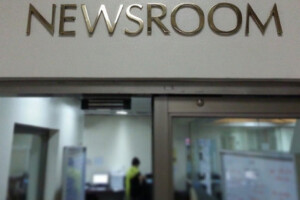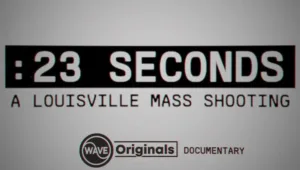Next-Gen Transition Demanding Answers

Aitken: Compatibility Is Next-Gen Imperative

Any new broadcast TV technical standard must “harmonize” with the standards used by wireless mobile operator and the white space spectrum user communities, according to Sinclair’s tech guru Mark Aitken. That’s why Sinclair is working on an alternative to ATSC 3.0 along with Coherent Logix. Their joint venture, ONE Media, will create a platform that relies on software-defined radios in consumer devices ranging from LTE mobile phones to tomorrow’s TVs to make updates possible so TV stations don’t get locked into a standard that quickly becomes obsolete.
The new joint venture between Sinclair Broadcast Group and Coherent Logix, ONE Media, plans to develop what it’s calling the Next Generation Broadcast Platform that it feels is needed to address issues that ATSC is not. Sinclair’s Mark Aitken said: “ATSC does not offer a place for how we, as an industry, can work to shape regulation and work with all of the government bodies to make a next-generation system happen.”
At its NAB Show booth, GatesAir is presenting a technology demonstration showing how a single channel can be used to transmit DVB-T2 and LTE content by leveraging time division multiplexing and a technical aspect of DVB-T2 that instructs TVs to ignore the LTE signal and the LTE device to ignore the television signal.
Work on developing specifications of ATSC 3.0, the new TV transmission standard, should be done by late 2015, hopefully delivering broadcasters a giant leap forward in the kinds of services that stations will be able to provide generate money from.
Updating TV’s Progress Toward ATSC 3.0
 Rich Chernock, chief science officer of Triveni Digital, is leading the effort to develop TV’s next-gen transmission standard, ATSC 3.0. At next week’s NAB Show he will provide updates on ATSC 3.0 developments as well as lead an IEEE/BTS discussion on next-generation compression. He talks about where the process is now and what’s in store in Las Vegas.
Rich Chernock, chief science officer of Triveni Digital, is leading the effort to develop TV’s next-gen transmission standard, ATSC 3.0. At next week’s NAB Show he will provide updates on ATSC 3.0 developments as well as lead an IEEE/BTS discussion on next-generation compression. He talks about where the process is now and what’s in store in Las Vegas.
 Panelists at the HPA Tech Retreat agreed with PBS’s Eric Wolf: “Channel sharing is a reasonable option for people to look at, but at the end of the day management has to look at this and say we can take a one-time infusion of cash from the auction and give up forever some portion of our spectrum, which is our bread and butter, and forgo a lot of future options.” But panelists weren’t in harmony on every issue. CBS’s Bob Seidel (l) and Sinclair’s Mark Aitken disagreed on the approach to the next-gen TV standard ATSC 3.0.
Panelists at the HPA Tech Retreat agreed with PBS’s Eric Wolf: “Channel sharing is a reasonable option for people to look at, but at the end of the day management has to look at this and say we can take a one-time infusion of cash from the auction and give up forever some portion of our spectrum, which is our bread and butter, and forgo a lot of future options.” But panelists weren’t in harmony on every issue. CBS’s Bob Seidel (l) and Sinclair’s Mark Aitken disagreed on the approach to the next-gen TV standard ATSC 3.0.
OFDM Seen Key To Blanket OTA Coverage
 Many U.S. broadcasters view the adoption of the digital encoding scheme as crucial to the new ATSC 3.0 standard. They say it’s the best bet for stations to deliver strong, robust signals for reception not only on big-screen TVs with indoor antennas, but also smartphones, tablets and other mobile devices. An OFDM-based standard, they say, would facilitate a TV station’s ability to “cellularize” its broadcasting system — that is, supplement its main transmitter and antenna with several strategically located booster stations broadcasting on the same frequencies.
Many U.S. broadcasters view the adoption of the digital encoding scheme as crucial to the new ATSC 3.0 standard. They say it’s the best bet for stations to deliver strong, robust signals for reception not only on big-screen TVs with indoor antennas, but also smartphones, tablets and other mobile devices. An OFDM-based standard, they say, would facilitate a TV station’s ability to “cellularize” its broadcasting system — that is, supplement its main transmitter and antenna with several strategically located booster stations broadcasting on the same frequencies.
TV Groups Need To Get In The 3.0 Game
While Sinclair is working on its own next-gen transmission standard because it doesn’t like where ATSC 3.0 is headed, there’s another option. The station groups should become fully involved in ATSC — that’s the best way to insure that the standard that finally emerges in 2016 will jibe with their business strategy and give them a fighting chance.
Sinclair Developing Next-Gen TV Standard
 Spearheaded by Mark Aitken, Sinclair’s VP of advanced technology, the new “broadcast-centric” transmission standard is being designed to address an issue Sinclair feels is being left out of ATSC’s efforts: the ability to reach viewers on their mobile devices. “ATSC 3.0 ought to be whatever broadcasters want it to be,” Aitken says. “This process should be about bringing broadcasters to the table for a solution, rather than having it dictated to them by TV set manufacturers.”
Spearheaded by Mark Aitken, Sinclair’s VP of advanced technology, the new “broadcast-centric” transmission standard is being designed to address an issue Sinclair feels is being left out of ATSC’s efforts: the ability to reach viewers on their mobile devices. “ATSC 3.0 ought to be whatever broadcasters want it to be,” Aitken says. “This process should be about bringing broadcasters to the table for a solution, rather than having it dictated to them by TV set manufacturers.”
Dr. Richard Chernock, the chief science officer of Triveni Digital, will succeed James Kutzner as head of the Technology Group 3 working on developing ATSC 3.0 broadcast TV standards.
Broadcasters attending this year’s event in New York City (Nov. 13-14) can easily fill their two-day schedule with sessions about how to deliver video to mobile devices, how to get ready for ATSC 3.0 and how to improve HD images in a 4K world.
The demonstration took place in Australia, but it showed how U.S. television stations could potentially broadcast in the future. Ericsson, in partnership with Qualcomm, submitted its LTE Broadcast Solution to the Advance Television Systems Committee as a proposal for ATSC 3.0, the next-generation U.S. broadcast standard. “LTE Broadcast provides the ability to send the same content simultaneously to a very large number of devices in a target area,” says Thomas Norén, VP, head of Project Area Radio at Ericsson.
Mobile DTV Is Dead, Long Live ATSC 3.0

In partnership with Harris Broadcast, “Futurecast” is designed to increase data throughput by 30%, improve mobile TV and indoor TV reception and feature robust transmission capabiltiies for things like 4K broadcasts. Notably, the proposed physical layer doesn’t mention DVB, the European standard that was included in several of the ATSC 3.0 proposals. LG developed the current ATSC standard used today.
 At the IBC Show this week in Amsterdam, the DVB standards body is showing off one of the top priority goals of ATSC 3.0 using its DVB-T2 standard: A single terrestrial signal that’s robust enough to send a 4K broadcast to a television set and a lower-resolution broadcast to a mobile device.
At the IBC Show this week in Amsterdam, the DVB standards body is showing off one of the top priority goals of ATSC 3.0 using its DVB-T2 standard: A single terrestrial signal that’s robust enough to send a 4K broadcast to a television set and a lower-resolution broadcast to a mobile device.
Next-Gen TV Standard: DVB With A Twist?
 Proposals for the upcoming ATSC 3.0 TV transmission base much of their plans on the European standard DVB-T2. The ATSC’s goal is to develop a standard by 2016 that generates a signal robust enough to be received on smartphones and tablets and on TV sets with indoor antennas virtually anywhere. “I’m very pleased with all of the responses,” says Mark Richer, ATSC president. “There’s a great range of companies, a lot of support.”
Proposals for the upcoming ATSC 3.0 TV transmission base much of their plans on the European standard DVB-T2. The ATSC’s goal is to develop a standard by 2016 that generates a signal robust enough to be received on smartphones and tablets and on TV sets with indoor antennas virtually anywhere. “I’m very pleased with all of the responses,” says Mark Richer, ATSC president. “There’s a great range of companies, a lot of support.”
 On Friday, 19 organizations filed 10 proposals for ATSC 3.0, the next-generation television standard. Filers included LG, Harris Broadcast, Samsung and Sony. One company of notable interest is the nation’s largest TV station owner: Sinclair Broadcast Group.
On Friday, 19 organizations filed 10 proposals for ATSC 3.0, the next-generation television standard. Filers included LG, Harris Broadcast, Samsung and Sony. One company of notable interest is the nation’s largest TV station owner: Sinclair Broadcast Group.
HbbTV On U.S. Broadcasters’ Agenda For IBC
 The global interactive broadcasting standard will be the focus of U.S. broadcasters at next month’s IBC gathreing in Amsterdam. Says Kevin Gage, NAB’s chief technology officer: “Our job is to go look at what are potential future capabilities of television in the U.S. The outreach with HbbTV is all part of the learning process.”
The global interactive broadcasting standard will be the focus of U.S. broadcasters at next month’s IBC gathreing in Amsterdam. Says Kevin Gage, NAB’s chief technology officer: “Our job is to go look at what are potential future capabilities of television in the U.S. The outreach with HbbTV is all part of the learning process.”
TV Should Heed Smith’s Next-Gen Urgency

Smith: Adopt Next TV Standard – Now
 Sinclair Broadcast Group CEO David Smith has a vision. It’s that broadcasting can go toe-to-toe with cable, satellite, wireless broadband and any other medium in providing multichannel TV that lets advertisers target ads to the individual consumers most likely to buy. That’s why he’s adamant that broadcasters need to adopt ATSC 3.0 as the next-generation TV standard as quickly as possible. Without it, he says, “we can’t compete.”
Sinclair Broadcast Group CEO David Smith has a vision. It’s that broadcasting can go toe-to-toe with cable, satellite, wireless broadband and any other medium in providing multichannel TV that lets advertisers target ads to the individual consumers most likely to buy. That’s why he’s adamant that broadcasters need to adopt ATSC 3.0 as the next-generation TV standard as quickly as possible. Without it, he says, “we can’t compete.”
Bill Lake, the FCC’s Media Bureau Chief, told the standards group that ATSC 3.0 — the next-generation and non-backwards compatible television standard — can’t be completed and deployed without holding up the spectrum auction and channel repack.
 Noting that 25 more stations have said they will soon be offering a mobile DTV service, Smith told the crowd at today’s NAB Show opening session that broadcasters have an advantage in the mobile marketplace. “Our one-to-many architecture allows us to deliver a product where there is no streaming necessary, so there’s no signal congestion.” And he urged broadcasters to “rise up to meet consumers’ desire for more live, local TV content.”
Noting that 25 more stations have said they will soon be offering a mobile DTV service, Smith told the crowd at today’s NAB Show opening session that broadcasters have an advantage in the mobile marketplace. “Our one-to-many architecture allows us to deliver a product where there is no streaming necessary, so there’s no signal congestion.” And he urged broadcasters to “rise up to meet consumers’ desire for more live, local TV content.”
TV’s Future Is Now On NAB’s Exhibit Floor
 Starting this weekend, broadcasters will be tempted with new ways of producing, managing, storing and airing programming with promises of better quality and greater efficiency. Prominent among those new ways will be cloud technology, mobile DTV and next-generation transmission standards.
Starting this weekend, broadcasters will be tempted with new ways of producing, managing, storing and airing programming with promises of better quality and greater efficiency. Prominent among those new ways will be cloud technology, mobile DTV and next-generation transmission standards.
CEs: Mobile Job One For ATSC 3.0
A TVNewsCheck survey shows that when it comes to ATSC 3.0 — the next-generation television standard — chief engineers by a nine to one margin say delivering broadcasts to mobile devices is more important than broadcasting in 4K or 3D.
The Advanced Television Standards Committee released its call for proposals for ATSC 3.0 with responses due by Sept. 27.
In the next couple of weeks, the Advanced Televisions Standards Committee will issue a call for proposals for ATSC 3.0 — a new physical layer that aims to bring broadcasting in 4K and multiscreen viewing to fruition — to broadcasters, consumer electronic manufacturers and professional equipment manufacturers.
Next TV Standard Must Be Truly Universal

What if you could buy a 50-inch television, mount it anywhere in your house, and receive dozens of channels on it for free and without any futzing around? What if most or all broadcast signals, in their native form, were easily receivable on tablets and smartphones?
Put Next-Gen TV, Repack On Same Track

The new ATSC 3.0 Technology Group — TG3 — is designed to develop broadcast specifications for a range of new services including Internet-enhanced broadcasting and non-real-time and 3D broadcast standards, as well as ongoing support for the ATSC mobile DTV standard.
































